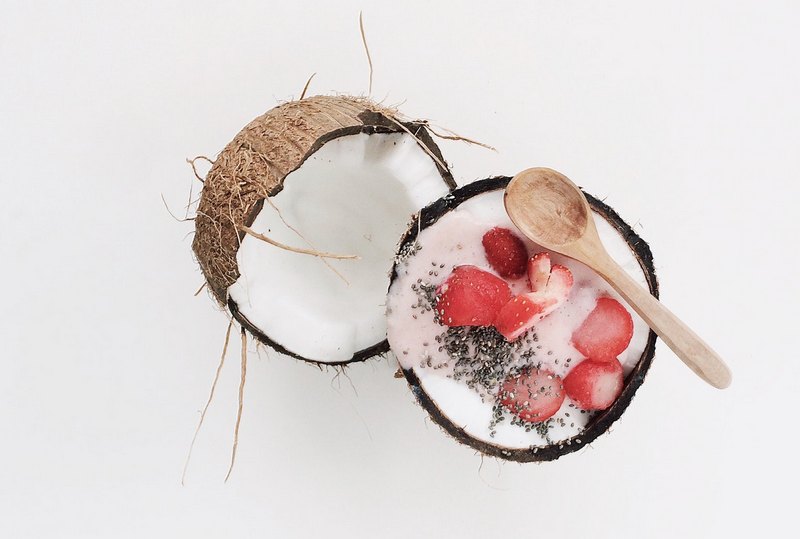One of the delicious milk that is free of dairy is coconut milk which is both satisfying and sweet. Coconut milk can be used for almost anything you will like to use dairy milk constituent for and the good thing about this one is that it has no dairy. Coconut milk will work well for those who cannot tolerate dairy meals.
It is quite easy for coconut milk to be heated up but what we want to find out is whether you can store already heated coconut milk and then reheat it. Coconut milk can be heated and then reheated easily by using either a microwave or stovetop since it has no dairy.
A Guide to Coconut Milk
There are different forms in which coconut milk can be seen, from fresh to carton, then canned, and full fat. Each has its unique uses and qualities and it is all about your choice and what you want to use it for. Check below for some primary forms you will find out there:
- Coconut milk powder
- Canned coconut milk
- Coconut cream (full-fat) milk
- Carton coconut milk
If you want to use coconut milk cold with your cereal or for drinking primarily, use the carton variety. Coconut milk has varieties for different reasons. Coconut milk is used in sauces of many Asian dishes and the canned variety works well for this. Irrespective of forms, coconut milk is not gotten from different places, they are all from a coconut’s meat.
Coconut water and coconut milk are both extracted from different parts of a coconut. The water is from the center while the milk is from the meat. If you want a substitute for dairy milk, coconut milk will work perfectly well and there are numerous uses it has that milk does not due to ordinary milk being a dairy product.
Coconut milk has or several decades acted as a staple for foods like Filipino, Indian, Asian, Vietnamese, and Thai dishes. It is also used as a staple for other dishes in some other locations where it works as a replacement for dairy options. We will like to check out each of the types of coconut milk you will find out there to fully understand the uses.
The Different Forms of Coconut Milk Explained
There are different forms of coconut milk and each of the forms has its unique uses. We want to have a breakdown of each of them so that you will know what we mostly use them for and you will also get to know the storage process and process of reheating each of them. For this guide, we have decided to check out each of the coconut milk separately and have a breakdown of details of each of them.
Carton Coconut Milk
Whenever you come across a carton of coconut milk at a grocery store, you will check the ingredient list and find something such as; coconut milk that is made from natural flavors, Gellan gum, locust bean gum. Sunflower lecithin, sea salt, 2 percent or less of mineral and vitamin blend (Vitamin B12, Vitamin D2, Vitamin A Palmitate, calcium carbonate), cane sugar, coconut cream, and filtered water.
There are lots of things regarding carton coconut milk even more than ordinarily coconut milk. It would have been well processed to ensure the texture and consistency can be compared to the dairy milk option and for the flavor to be sweetened. You could also buy unsweetened carton coconut milk to avoid processed sugars often contained in carton coconut milk. It should also be noticed that the nutrients and vitamins are additives instead of being the minerals’ original forms.
Storing Carton Coconut Milk
Our main focus is on how to reheat various forms of coconut milk but we want you to find out how it can affect the methods of storing. You could notice that the coconut milk you buy is not that from a fridge. It is fine at least until the milk is opened. Once you open it, store it inside the refrigerator so that it will not go bad.
If you want to further extend its shelf life, coconut milk can also be frozen where it will last for up to 6 months. The one you refrigerate can remain fresh for about 10 to 12 days. You need to put the coconut milk inside a sealable container if you want to store it. It can be stored still in its carton inside the refrigerator. If you will like to store it inside a freezer, transfer it into an air-tight container.
Immediately after the coconut milk has been heated, it can be stored well again. The process is still the same as when you want to store it fresh. You should, however, not pour coconut milk that has been heated back into the carton, just place it inside an air-tight container.

Reheating Carton Coconut Milk
We recommend that you should use a stovetop to reheat coconut milk but if you want, you could also use a microwave. Check the steps below:
- Leave your milk to defrost if it is frozen. What you should do is to move it into the refrigerator for about 24 hours to thaw properly.
- Proceed to shake your coconut milk to mix well.
- Put it inside a saucepan that you want to use.
- You should then turn the heat to around medium to high.
- Stir your coconut milk with a whisk through the process of warming. To get the best outcome, constantly whisk it.
- Remove the milk from heat when it starts to simmer.
- You can now enjoy your coconut milk.
If your choice is to a microwave to reheat your coconut milk, put it inside a microwavable container and allow it to heat for about 1 minute, and then stir well. It could need extra time of about 30 seconds’ increments if the heat is not enough. Ensure you stir it each time you finish it,
(Coconut Cream) Full-Fat Coconut Milk
Full-fat coconut milk or coconut cream is creamier and thicker than the normal coconut milk. The fat content is higher and it is best when you use it for baking and cooking. Even though you are allowed to heat, then store, and then reheat this particular form, the solution is not ideal. It is usually found canned, the best thing is to only open the milk when you need it. You will still not be able to use the entire can, so there is a need to store it.
Storing your Coconut Cream
The process of storing your coconut cream isn’t different from other forms. The only difference could be that you have to store the coconut cream in your airtight container because it is canned. A lot of people use sealable containers to store it. The coconut cream can be stored inside the refrigerator for up to 7 to 10 days or inside your freezer for up to 4 months.
You will need to allow the coconut cream to defrost before using it after removing it from a freezer. Allow it to stay inside the fridge for about 24 hours. Some will still be frozen but you can use it for the purposes of reheating. Use your coconut cream within 7 days that it defrosted.
Reheating your Coconut Cream
A microwave is not recommended to be used to reheat coconut cream. A stovetop will fit better because it is creamier and thicker. Check the steps below:
- Leave the coconut cream to defrost if you have stored it inside your freezer.
- Put it inside a saucepan. Add one teaspoon of water if it looks too thick.
- The heat should be turned to medium. Then allow your cream to become warm.
- Constantly stir your cream through the whole process with your whisk or spoon.
- Remove the coconut cream from heat once it starts to simmer.
- You may then serve to enjoy it.
You will notice that the process is still the same, just that you wouldn’t need to whisk constantly but there is a need to still stir repeatedly. Constant whisking is discouraged because coconut cream is thicker and whisking may lead to the breakdown and also cause it to become a bit too thin than it should be.
Canned Coconut Milk
This type is different from the carton coconut milk when you consider how it is processed originally and then made. It is quite similar to coconut cream, but we have some variables. Most part of canned coconut milk doesn’t contain sugars and additives and it can be compared to the purest coconut milk.
Guar gum and organic coconut water are used to make organic coconut milk that is the ingredient for canned coconut milk. Contained in this form of coconut milk is dense nutrition with natural minerals and vitamins that are not added or processed like that from the carton. This form can stay on the counter for a long time and you can store it this way until when you need it.
If after you opened the can, you cannot finish it at once, store it just like you store some other kinds of milk. This form is even thicker than the carton variety but their consistency will resemble after heating.
Storing Canned Coconut Milk
You can store it inside the refrigerator for about 10 days while inside the freezer for about 5 months.
Reheating your Canned Coconut Milk
You can best reheat this form of coconut milk on a stovetop. You may also use a microwave if you want. Check below for the directions:
- If needed, the milk should be allowed to thaw.
- Put it into a saucepan
- Put the saucepan on the stovetop under medium heat.
- Whisk or stir continuously as it heats to avoid curdling or thickening.
- The milk is ready once it starts to simmer.
- You can then remove it from the heat to enjoy it.

